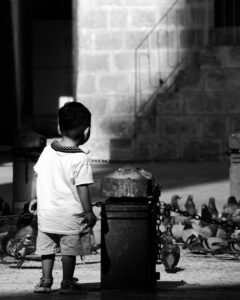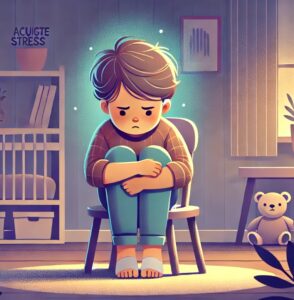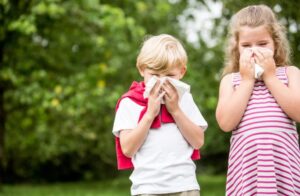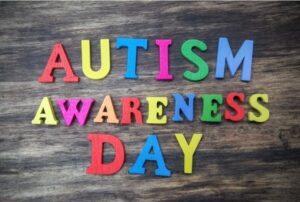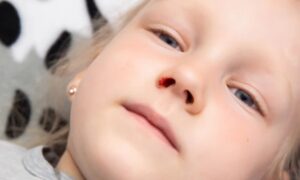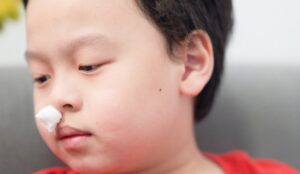In today’s society, more and more parents are becoming aware of children's mental health issues. Depression and anxiety are common psychological disorders that affect a child's emotions and behavior. While these two conditions may seem similar, they have distinct differences. If your child is experiencing mood swings or behavioral changes, it can be confusing: is it depression or anxiety? As a parent, understanding these issues and knowing how to recognize and address them can help your child overcome these challenges and regain their mental well-being.
What is Depression?
Depression is a mood disorder that causes children to experience prolonged sadness, loss of interest, and disengagement from daily activities. Depression is not just about feeling down temporarily; it's a persistent emotional state that impacts a child’s thoughts, behavior, and even physical health. Here are some common symptoms of depression:
- Low Mood: Children often appear sad, empty, and lose interest in things they used to enjoy.
- Changes in Appetite and Weight: Depressed children may lose their appetite or, on the contrary, overeat.
- Insomnia or Excessive Sleep: Children may complain about trouble falling asleep or feel excessively tired and want to sleep all the time.
- Low Energy: Even simple tasks may seem overwhelming to children, and they lack motivation.
- Self-Blame and Hopelessness: They may feel like they are not good enough and believe life has no meaning.
- Social Withdrawal: Children may isolate themselves from friends and family and refuse to go to school.
What is Anxiety?
Anxiety, unlike depression, primarily manifests as excessive worry, tension, and fear about the future. Anxiety is not just about worrying about specific events, but rather an uncontrollable, persistent feeling of anxiety. The common types of anxiety disorders in children include generalized anxiety disorder, social anxiety disorder, and separation anxiety disorder. Here are some typical symptoms of anxiety:
- Excessive Worrying: Children may worry about their schoolwork, social relationships, and even everyday occurrences, far beyond the actual threat.
- Physical Symptoms: Children with anxiety often experience headaches, stomachaches, muscle tension, or other physical discomforts, especially when under stress.
- Fear and Avoidance: Certain situations or activities may make the child feel extremely uneasy, leading them to avoid social situations or school.
- Emotional Instability: Children with anxiety often exhibit mood swings, feeling nervous, and at times, finding it hard to sleep.
- Difficulty Focusing: Anxiety-filled thoughts overwhelm the child’s mind, making it hard to concentrate, particularly when trying to study.
- Excessive Dependence: Children with separation anxiety may be afraid to be away from their parents and refuse to leave home.
Key Differences Between Depression and Anxiety
Although both of these mental health issues share some similarities, they differ significantly in symptoms, emotional expression, and thought patterns:
- Emotional Expression:
- Depression: Children often feel sad, hopeless, and lose interest in future activities.
- Anxiety: Children feel tense, excessively worried, and fearful about the future.
- Physical Symptoms:
- Depression: May manifest in fatigue, sleep problems, and weight changes.
- Anxiety: Typically accompanies physical symptoms like stomachaches, headaches, and shortness of breath.
- Behavior Patterns:
- Depression: Children may withdraw socially and lose interest in daily activities.
- Anxiety: Children may show excessive dependence and avoid fearful situations or social interactions.
- Thought Patterns:
- Depression: Children may feel they are not good enough, engage in self-blame, and believe everything is hopeless.
- Anxiety: Children may worry about the future, fearing bad things will happen.
How to Identify if Your Child Has Depression or Anxiety
As a parent, how can you accurately identify if your child is suffering from depression or anxiety? You can make an informed judgment by considering the following:
- Observe the Duration of Symptoms: Normal mood fluctuations tend to be temporary, whereas depression and anxiety symptoms last for weeks or even months.
- Look for Behavioral Changes: Has your child suddenly become more withdrawn or reluctant to engage with others? Have they lost interest in activities they once enjoyed?
- Physical Symptoms: Anxiety often presents with stomachaches, headaches, or sleep disturbances. If your child frequently complains of these issues, it could indicate anxiety.
- School Performance: Has your child's performance at school declined? Are they unwilling to go to school? This could be a sign of social anxiety or depression.
How to Help Your Child Cope with Depression and Anxiety
When you suspect your child may have depression or anxiety, here are some steps you can take to help:
- Maintain Open Communication: Keep the lines of communication open with your child, encourage them to express their feelings and concerns, and reassure them that they are understood.
- Seek Professional Help: If the symptoms are severe, seek help from a psychologist or a child psychiatrist. Cognitive behavioral therapy (CBT) has been proven effective for treating both conditions.
- Encourage Positive Activities: Encourage your child to engage in physical activities, arts, or social events, as these can help alleviate emotional stress and improve mental health.
- Provide Family Support: Create a safe, supportive environment at home where your child feels loved and cared for.
- Establish a Regular Routine: Ensure your child has a consistent daily schedule, avoiding excessive academic pressure, and promoting a healthy balance of activities.
FAQ (Frequently Asked Questions)
- How can I differentiate whether my child has depression or anxiety? Depression is characterized by persistent low mood and loss of interest, while anxiety is marked by excessive worry and fear of future events. Observing the symptoms and their duration can help distinguish the two.
- Can depression and anxiety occur at the same time in children? Yes, it’s possible for children to have both depression and anxiety, which is referred to as a "dual diagnosis." In such cases, treatment may involve addressing both issues simultaneously.
- Will childhood depression go away on its own? While mild depression may improve over time, most cases of depression require professional intervention, including therapy or medication, for effective treatment.
- How can I support a child with anxiety? Providing emotional support, encouraging them to express their feelings, and seeking professional therapy are crucial. Cognitive-behavioral therapy can help children manage their anxiety effectively.
References:
- American Psychological Association. "Understanding Depression in Children and Adolescents." APA, 2020.
- National Institute of Mental Health. "Anxiety Disorders in Children and Adolescents." NIMH, 2021.
- Mayo Clinic. "Childhood Depression." Mayo Clinic, 2022.






